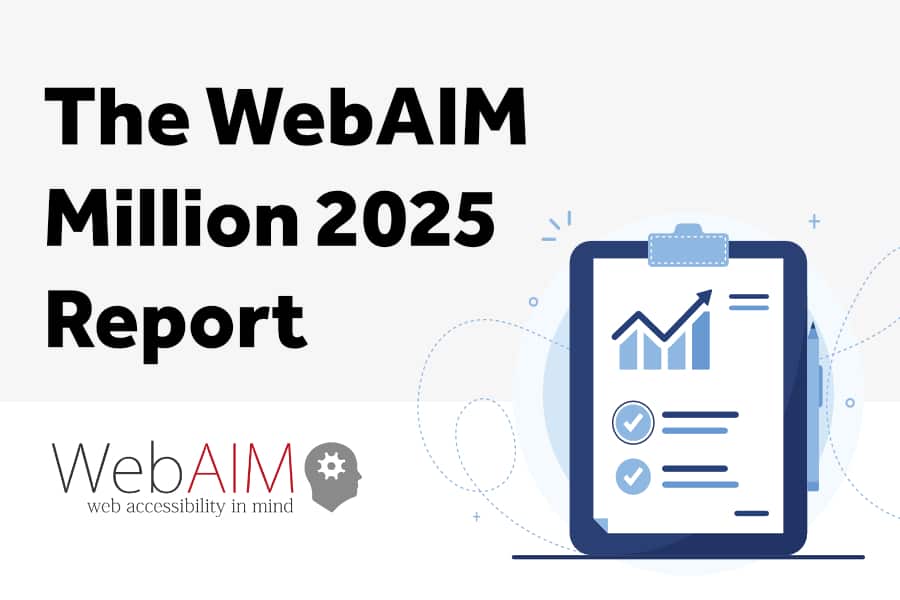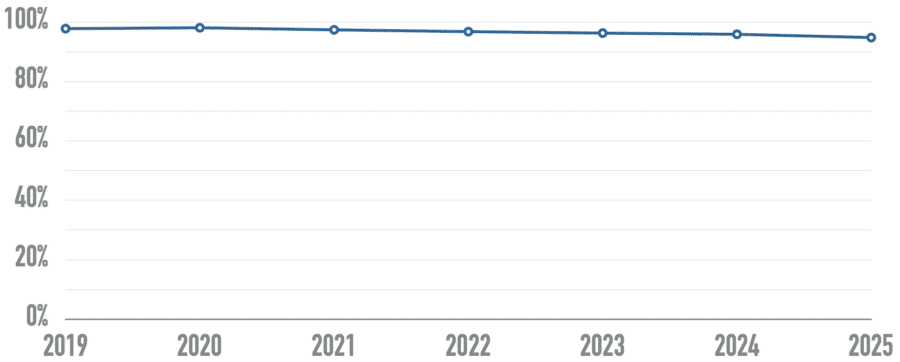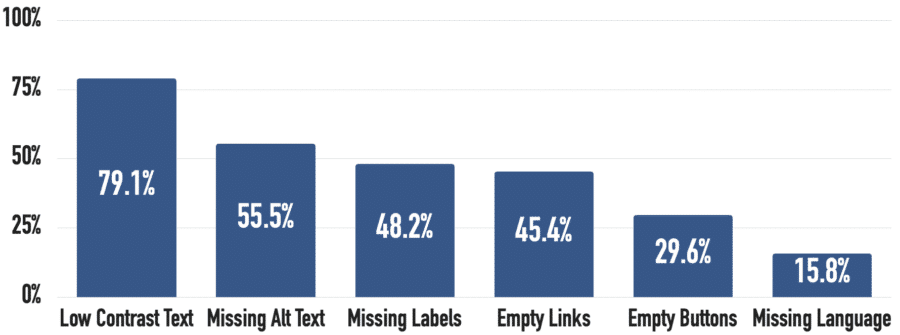What the WebAIM Million 2025 Report Tells Us About Website Accessibility
2nd April 2025

The WebAIM Million 2025 Report is one of the most comprehensive reports on the accessibility of websites across the internet. Each year, it analyses the homepages of the top 1 million websites to assess how well they meet the Web Content Accessibility Guidelines (WCAG). The 2025 edition is now live and the results are once again sobering.
While this report doesn’t focus solely on the public sector, the findings highlight a widespread failure to meet even the basic accessibility standards. Whether you’re a senior leader in a public body or managing a private sector business, the message is the same, accessibility is still being overlooked across the board.
Key Findings from the WebAIM Million 2025 Report
Across the top 1 million homepages tested, WebAIM found:
- 94.8% had at least one WCAG 2 failure
- The average page had 51 errors
- 79.1% of pages included low contrast text
- 55.5% of images lacked meaningful alt text
- Over one-third had empty links or buttons
These aren’t edge cases. These are widespread, recurring accessibility problems found on some of the world’s most visited websites.

Source: WebAIM Million 2025 – Percentage of homepages with WCAG failures remains high (Image © WebAIM.org)
Why Website Accessibility Matters for Public and Private Sectors
The WebAIM Million doesn’t distinguish between sectors, but in the UK, public sector organisations are legally required to meet WCAG 2.1 AA standards (and now 2.2). For these organisations, the stakes are clear, legal compliance, inclusive service delivery and public trust.
But for private businesses, the pressure is increasing too. As accessibility becomes more visible and user expectations rise, businesses that ignore it risk excluding users, damaging brand perception and falling behind competitors that take it seriously.
Whether you’re serving residents, patients, tenants or customers, inaccessible websites fail to meet the needs of everyone.
Our Take: Accessibility Is Still an Afterthought, Until It’s Not
In our experience, accessibility tends to be considered too late in the process. It’s seen as an extra, not a foundation. That mindset creates risk and adds cost later down the line.
The reality is, many of the issues raised in the WebAIM Million 2025 Report, tells us low contrast, missing alt text and poor link structures are straightforward to avoid when accessibility is part of the brief from day one.
We’ve seen first-hand how accessibility can be delivered without compromise. When we worked with NHS East London Foundation Trust on their QI microsite, accessibility wasn’t just a tick-box, it was a requirement. The result is a site that’s clear, navigable and compliant, without sacrificing design or usability.

Source: WebAIM Million 2025 – Most common accessibility errors (Image © WebAIM.org)
Website Accessibility for Public and Private Sector Teams
If you’re commissioning a new website or updating your current one, the WebAIM Million should be a wake-up call. It shows just how far off the mark most websites are and gives you a benchmark to aim higher.
For public sector organisations, accessibility is not optional. WCAG compliance is a regulatory requirement, and digital inclusion is part of your public duty.
For private sector teams, it’s an opportunity to lead. Accessible websites work better for everyone. They’re more usable, more inclusive and often perform better across SEO and mobile too.
How to Build Websites That Meet WCAG 2.2 AA Standards
We can build websites to WCAG 2.2 AA standards. That means clean code, accessible colour palettes, semantic headings, readable typography and clear navigation, all delivered as standard if accessibility is part of your project brief.
If accessibility is something your team needs to address, either to meet regulations or to ensure better access for all users, now is the time to plan for it.
Let’s make your website work for everyone.